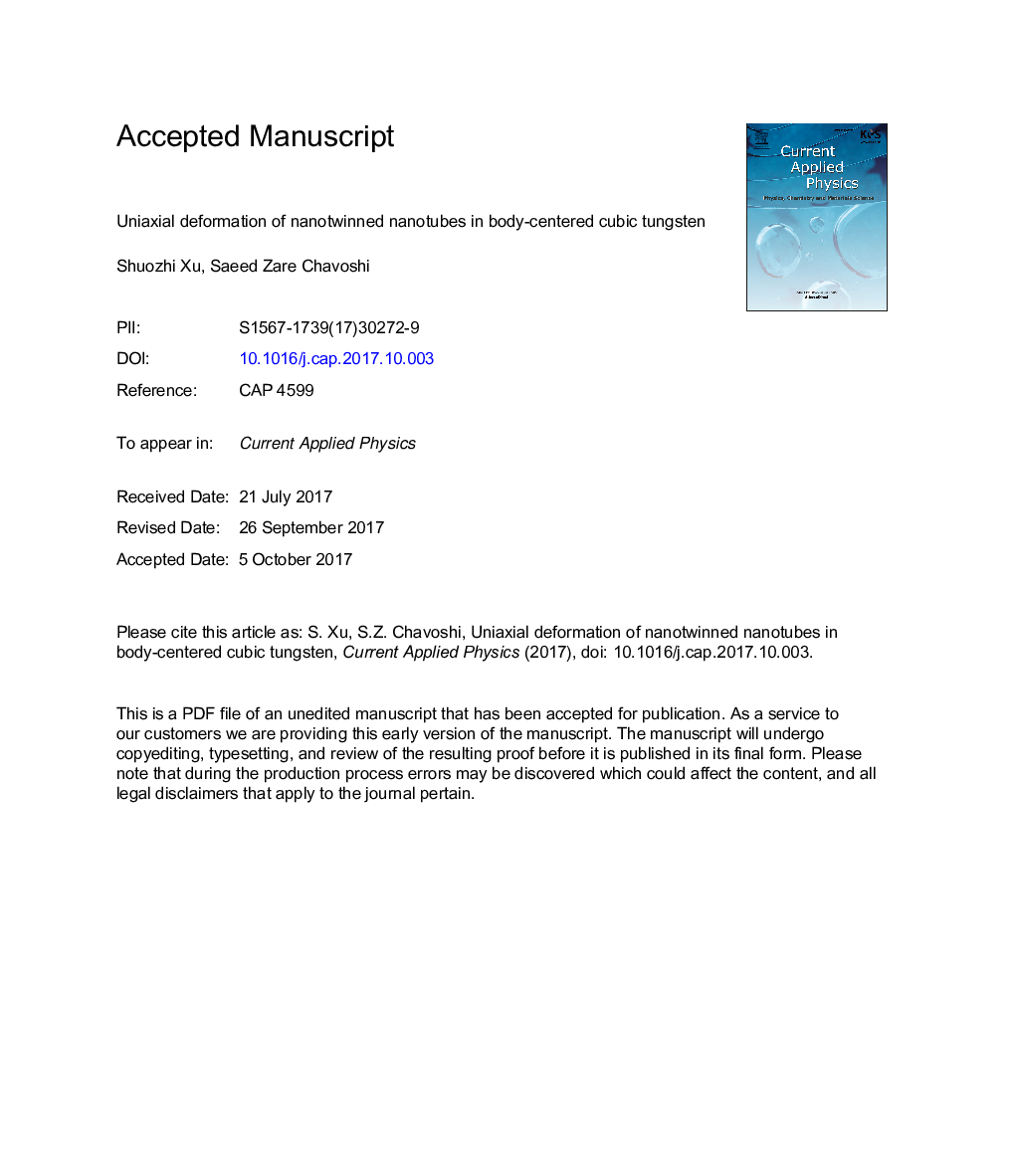| Article ID | Journal | Published Year | Pages | File Type |
|---|---|---|---|---|
| 8148220 | Current Applied Physics | 2018 | 22 Pages |
Abstract
We perform large-scale molecular dynamics simulations to delve into tensile and compressive loading of nanotubes containing {112} nanoscale twins in body-centered cubic tungsten, as a function of wall thickness, twin boundary spacing, and strain rate. Solid nanopillars without the interior hollow and/or nanotubes without the nanoscale twins are also investigated as references. Our findings demonstrate that both stress-strain response and deformation behavior of nanotwinned nanotubes and nanopillars exhibit a strong tension-compression asymmetry. The yielding of the nanotwinned nanotubes with thick walls is governed by dislocation nucleation from the twin boundary/surface intersections. With a small wall thickness, however, the failure of the nanotwinned nanotubes is dominated by crack formation and buckling under tensile and compressive loading, respectively. In addition, the strain rate effect, which is more pronounced in compressive loading than in tensile loading, increases with a decreasing twin boundary spacing.
Related Topics
Physical Sciences and Engineering
Physics and Astronomy
Condensed Matter Physics
Authors
Shuozhi Xu, Saeed Zare Chavoshi,
